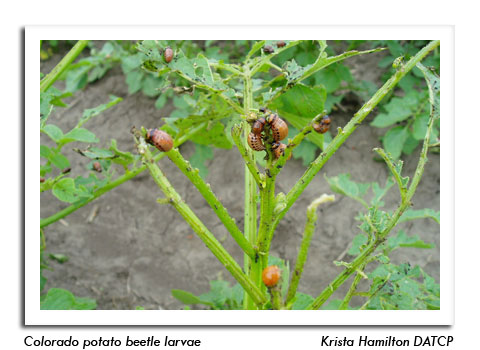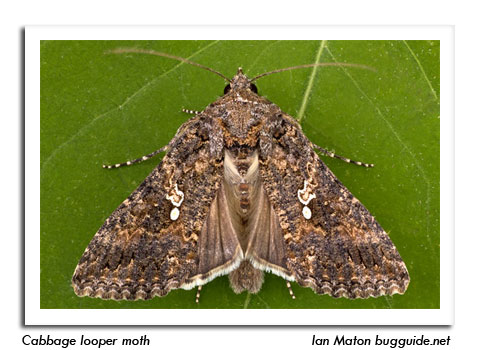
 |
|
|
Vegetables
Volume 57 Number 10 Date 06/14/2012 COLORADO POTATO BEETLE - Larvae from overwintered beetles are predominantly in the first and second instars. Bacterial insecticide treatments of Bacillus thuringiensis var. tenebrionis (Btt) are most effective at this time, while the larvae are very small. Most products persist only 1-2 days and must be reapplied 2-3 times to effectively control populations. CABBAGE LOOPER - Damaging populations of this typically late-season pest have been reported in cole crops in southeast Wisconsin. Migrants arrived in the state earlier than normal this year and temperatures in subsequent weeks have been very conducive for oviposition and rapid larval development. STRIPED CUCUMBER BEETLE - Home gardeners are reporting minor damage to cucurbits, especially in the southwest and west-central areas. Treatment may be justified for infestations of 4-5 beetles per 50 plants. CORN EARWORM - Low numbers of migrants have been collected in black light and pheromone traps at scattered sites since early May. The main flight ordinarily does not occur until August, but extra attention to this species in sweet corn may be in order this month. ONION THRIPS - Populations are increasing rapidly in response to the recent hot, dry weather. Damage to onions, cauliflower, cabbage, snap beans, cucumbers, melons and tomatoes is probable for areas of the state where dry conditions persist in the week ahead. Onion thrips are most damaging to cabbage and cauliflower, causing whitish blotches or brown blisters on the foliage and reddish-brown areas on the heads. Insecticidal control is justified for actively increasing populations during early cupping to curd formation stages. The threshold is 25 or more thrips per plant for conventional onions and 45 or more per plant for tolerant cultivars. --Krista Hamilton, DATCP Entomologist 





|
|
|